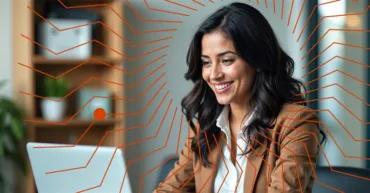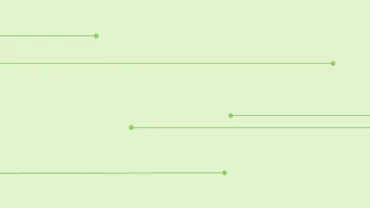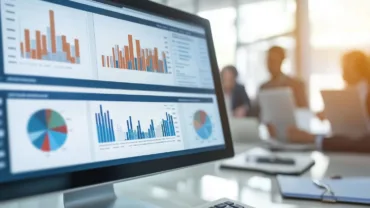A closer look at the role of technology in anti-trafficking efforts
Jump to ↓
| How technology can mitigate human trafficking |
| How organizations can fight the good fight |
| The Human Trafficking Crimes Resource Center |
Human Trafficking Statistics
|
When it comes to human trafficking, the numbers are appalling. Perhaps not surprisingly, human traffickers are increasingly using digital technology to carry out their crimes. That, and the fact that these crimes continue to increase, demonstrates how wickedly difficult it is to defeat.
But the situation isn’t hopeless.
January is Human Trafficking Awareness Month, a month to recognize the efforts of those involved to prevent human trafficking and raise awareness. In addition to raising public awareness of this to prevent these crimes, the motivation behind establishing this effort to end human trafficking is to get organizations of all kinds involved. It’s a global effort since so much human trafficking occurs across borders.
What organizations and governments worldwide have discovered is that one of the most powerful solutions they can do is fight fire with fire with the usage of technology.
How technology can fight human trafficking
Awareness of human trafficking begins with understanding what it is. Though there are many ways to define it, the description from the Council on Foreign Relations summarizes it well: “the trapping and exploitation of a person using deception, violence, or coercion. It generally takes three main forms: forced labor (which includes sex trafficking), forced marriage, and forced organ removal.”
Over the last five years, we have seen a major shift toward the regulation of children’s safety and privacy in the digital environment. The shift has been driven by increasing public concerns about the risks children face online and the growing realization that the Internet was not designed with them in mind.
Traffickers use technology to increase the efficiency of their operations, remotely identifying and recruiting individuals. They then use digital communications to make contact with other traffickers as well as to market sexual abuse images. Global organizations with anti-trafficking efforts now fear that human traffickers are leveraging generative artificial intelligence (GenAI) to lure their victims.
|
The Office on Trafficking in Persons (OTIP)
All the more reason to fight fire with fire. While traffickers are exploiting digital technology, it can also be used to thwart human trafficking. And that makes it one of the most effective ways that businesses and organizations can use to join the fight.
To make technology an effective anti-trafficking weapon, organizations use a risk management framework to establish a strategic plan. Here are three key steps to reduce an organization’s exposure to human trafficking:
Prevention
Prevention is always the preferred strategy for fighting human trafficking. Organizations can tap several technologies to protect themselves from inadvertently aiding traffickers. Implementing digital identity verification strategies can help prevent the exploitation of vulnerable people.
Another example: AI-powered monitoring systems to reveal suspicious patterns in supply chains and labor practices that potential vendors might be engaged in; similar to fraud prevention.
Blockchain technology can help organizations create transparent records of worker recruitment, contracts, and payments.
Detection
Organizations also can use technology to battle trafficking if it has already occurred. For instance, machine learning algorithms can identify potential trafficking activities hidden in financial transactions, alerting and raising flags to organizations.
Data analytics can also spot irregular patterns in travel bookings, accommodations, or job postings that might provide evidence of trafficking activity. Computer vision systems can analyze imagery for signs of exploitation at vendors’ facilities.
Response
If after a thorough investigation, an organization becomes aware that there is some form of human trafficking intersecting with its operations, it can respond in several ways that incorporate digital technology.
The organization can create secure reporting platforms that allow workers to report their concerns confidentially. An organization can also activate data visualization tools to map trafficking networks and support intervention efforts. In addition, it can coordinate its efforts with law enforcement and support services by developing case management systems.
 |
How organizations can fight the good fight
As the risk management framework demonstrates, there’s a great deal that organizations can and should do to reduce the instances of human trafficking. In his introduction to the State Department’s “2024 Trafficking in Persons Report”, U.S. Secretary of State Antony Blinken emphasized how the misuse of technology has become a real problem but it’s that same technology that can be used to fight human trafficking.
|
U.S. Secretary of State Antony Blinken
The U.S. Department of State
It certainly should be considered a crucial element in an organization’s environmental, social, and governance (ESG) efforts. Here are some strategies organizations can put in place within their operations:
Supply chain monitoring
No business wants to discover that it has been purchasing components from a vendor that uses forced labor, whose victims often are “supplied” by human traffickers. As of October 2024, the U.S. Department of Labor listed 159 goods from 78 countries on its forced labor lists. These include agricultural goods as well as many manufactured products, particularly textiles.
Businesses can help combat the use of forced labor in their supply chains by adopting codes of conduct that their vendors must comply with. They can also conduct supply chain audits of their suppliers. With the results of these audits in hand, they can then use digital data analysis tools to identify possible instances of human trafficking.
The use of digital platforms, another technological strategy, can provide real-time monitoring of suppliers’ labor conditions and recruitment practices. Case in point: Organizations conducting supply chain audits can create surveys to ask factory workers questions that might reveal potentially exploitative practices which can enhance compliance. With the use of GenAI, organizations can transform feedback in different ways (translations, summaries, pattern detection, etc.).
Financial controls
Even if an organization is not in the supply chain industry, complying with anti-money laundering regulations can help stop human traffickers from going undetected and unidentified.
Organizations can also partner with financial technology (FinTech) companies that specialize in detection features for anti-trafficking efforts. As noted earlier, they can implement AI-powered systems that can reveal suspicious patterns in supply chains and labor practices.
It’s also important that they create secure channels that allow victims and witnesses to report activities that could uncover instances of human trafficking.
Collaborations
Fighting human trafficking requires everyone to work together.
Organizations can set up networks with businesses, government agencies, and advocacy agencies to share information and best practices. These groups can also collaborate to support the development of digitally powered trafficking reporting systems.
The Human Trafficking Crimes Resource Center
Thomson Reuters has long been involved in the fight against human trafficking, developing technologies that organizations can utilize as part of this essential work.
The company also launched the Human Trafficking Crimes Resource Center, addressing what governments and companies can do to mitigate forced labor, sex trafficking, and child exploitation. Thomson Reuters will make nine toolkits available. One of the first it made available is designed to help officials reduce trafficking at large-scale public events. In addition, it offers media toolkits that organizations can use to raise public awareness about human trafficking and its perpetrators’ luring strategies.
The fight against human trafficking is one we all should fight and keep fighting, not just this month but every month.
Thomson Reuters is not a consumer reporting agency and none of its services or the data contained therein constitute a ‘consumer report’ as such term is defined in the Federal Fair Credit Reporting Act (FCRA), 15 U.S.C. sec. 1681 et seq. The data provided to you may not be used as a factor in consumer debt collection decisioning, establishing a consumer’s eligibility for credit, insurance, employment, government benefits, or housing, or for any other purpose authorized under the FCRA. By accessing one of our services, you agree not to use the service or data for any purpose authorized under the FCRA or in relation to taking an adverse action relating to a consumer application.












